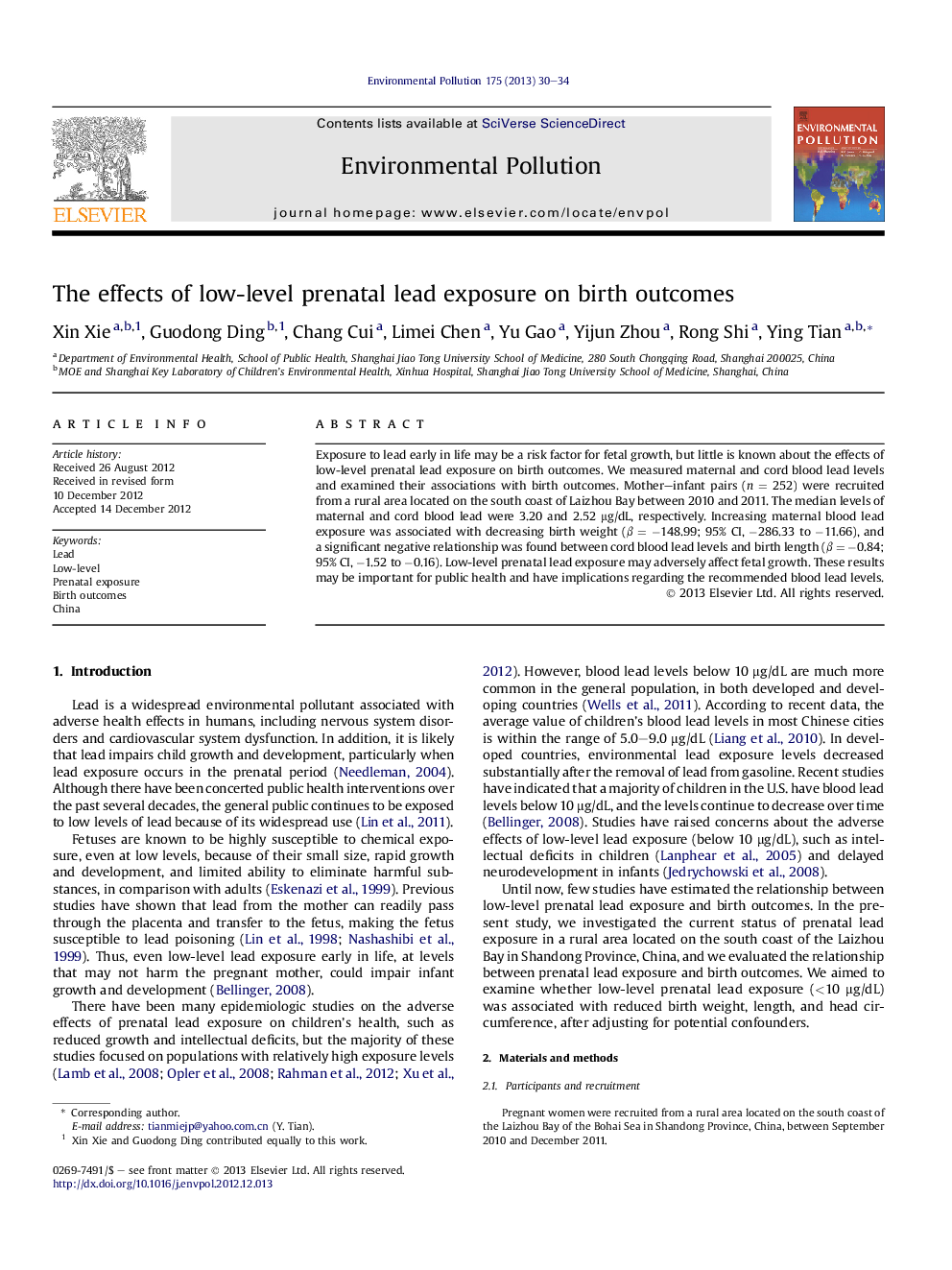| Article ID | Journal | Published Year | Pages | File Type |
|---|---|---|---|---|
| 4424581 | Environmental Pollution | 2013 | 5 Pages |
Exposure to lead early in life may be a risk factor for fetal growth, but little is known about the effects of low-level prenatal lead exposure on birth outcomes. We measured maternal and cord blood lead levels and examined their associations with birth outcomes. Mother–infant pairs (n = 252) were recruited from a rural area located on the south coast of Laizhou Bay between 2010 and 2011. The median levels of maternal and cord blood lead were 3.20 and 2.52 μg/dL, respectively. Increasing maternal blood lead exposure was associated with decreasing birth weight (β = −148.99; 95% CI, −286.33 to −11.66), and a significant negative relationship was found between cord blood lead levels and birth length (β = −0.84; 95% CI, −1.52 to −0.16). Low-level prenatal lead exposure may adversely affect fetal growth. These results may be important for public health and have implications regarding the recommended blood lead levels.
► Early-life exposure to low-level lead may be a risk factor for fetal growth. ► We estimated the relationship of low-level lead exposure with birth outcomes. ► Increased maternal blood lead levels was associated with decreased birth weight. ► A negative association was found between cord blood lead levels and birth length. ► Our results may have implications regarding the recommended maternal lead level.
